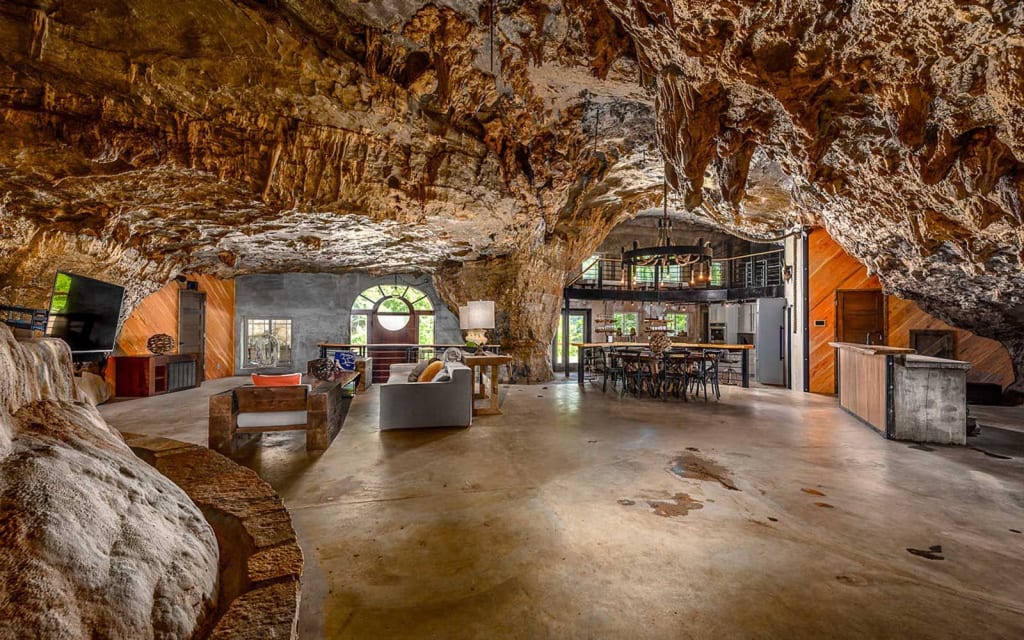Why Australians Are Forced To Live Underground
Life In The Heat

Embark on a journey along an expansive road leading to Central Australia, approximately 527 kilometres north of Adelaide, and witness the emergence of mysterious sand pyramids from the landscape. This enigmatic sight unfolds in the vicinity of Coober Pedy, a distinctive opal mining town with a population of around 2,200, situated in an environment that conjures images of a post-apocalyptic scene. Salmon-pink dust stretches endlessly, interrupted only by tenacious shrubs that defy the harsh surroundings.
As you traverse the terrain, encountering scattered piles of pale earth, the distinctive remnants of decades of mining activity come into focus. These mounds of discarded soil tell a tale of Coober Pedy's unique specialization— underground living. Remarkably, an estimated 60 % to 80 % of the town's population resides in homes hewn into the rock. Picture neighborhoods where ventilation shafts punctuate the landscape, and heaps of soil mark the entrances to these subterranean abodes. While the concept of an underground lifestyle may seem unconventional, especially during the winter months, it proves eminently practical amid the scorching summer days when temperatures in Coober Pedy can reach a blistering 126°F.
Delve into the world of underground living in Coober Pedy, locally known as dugouts, and discover the myriad benefits it offers. The constant temperature of 73°F below ground provides a stark contrast to the extreme conditions above, ensuring comfort in both sweltering summers and freezing winters. Beyond the aspect of climate control, underground living proves to be a financially savvy choice for Coober Pedy residents, as the town generates its electricity primarily from wind and solar power which is one of the most efficient way to produce power. This subterranean lifestyle minimizes the need for expensive above-ground air conditioning, a particularly valuable advantage when temperatures soar beyond 122°F.
Surprisingly, the financial investment required for underground homes in Coober Pedy is remarkably reasonable. In a recent auction, a three-bedroom house could be acquired for around $440,000 Australian, equivalent to approximately $26,000 twenty six thousand dollars in the US. Despite potential renovation needs, this represents a significant bargain when compared to standard Australian real estate prices. The advantages extend beyond financial considerations, as living underground means bidding farewell to bothersome insects, given that flies prefer to stay in the sunlight, and residents enjoy respite from sound and light pollution.
Moreover, the construction of dugouts may even provide a measure of protection against earthquakes, with vibrations passing through without causing disturbances. Facilitated by the softness of the local hard rock —reminiscent of butter — modern tunnelling machines streamline the excavation process, capable of removing up to 6 cubic meters of rock per hour. Residents can fashion spacious and uniquely designed rooms without additional structural support, owing to the robust nature of the sandstone.
Despite the apparent advantages, the challenge of dampness in underground structures is not a significant concern in Coober Pedy, where the minimal rainfall — less than half an inch per month on average during the summer — is counteracted by strategically incorporated ventilation shafts. These ensure an ample oxygen supply and facilitate moisture escape, keeping the dugouts dry. While underground living may present some challenges, such as potential mold issues, the resourceful residents of Coober Pedy devise clever solutions to ensure a comfortable and sustainable lifestyle.
In conclusion, opting for life in Coober Pedy's underground dwellings is both a distinctive and pragmatic choice, that will be offering respite from extreme temperatures and significant cost savings. The town's inhabitants have embraced all these unconventional lifestyle wholeheartedly, creating beautiful homes to live in with remarkable amenities while preserving the allure of their subterraneanman made haven.
About the Creator
Enjoyed the story? Support the Creator.
Subscribe for free to receive all their stories in your feed. You could also pledge your support or give them a one-off tip, letting them know you appreciate their work.






Comments
There are no comments for this story
Be the first to respond and start the conversation.